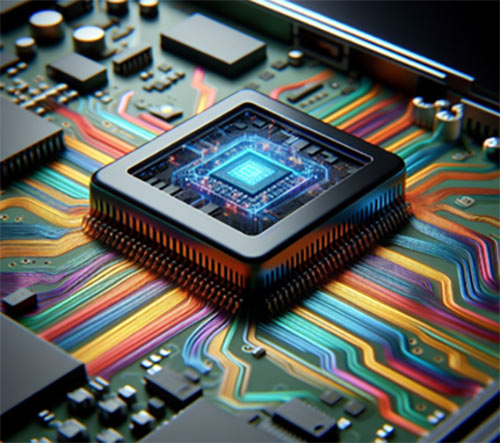
For the longest time, chipsets, the brains behind our smartphones, remained shrouded in mystery for the average Indian consumer. These tiny marvels of engineering dictated a phone’s performance, battery life, and camera capabilities, yet their role went largely unnoticed. But a fascinating shift is happening – chipsets are no longer an afterthought, they’re a crucial buying factor for Indian smartphone users.
The Early Days: Mystery and Myths
A decade ago, the average Indian consumer had little understanding of what a chipset was. For most, terms like CPU, GPU, and SoC (System on Chip) were technical jargon, best left to tech geeks. The focus was largely on the device’s brand, camera quality, battery life, and storage capacity. The chipset, often buried deep within spec sheets, played a background role. Its importance was acknowledged but not fully understood by the general public.
The Rise of Smartphone Culture

“As of 2024, there are over ~800 million smartphone users in the country, a number that is expected to keep growing.”
India’s smartphone user base is exploding. As India became one of the fastest-growing smartphone markets in the world, consumers began to pay more attention to the components that drive performance. Brands have started emphasizing the capabilities of their chipsets, highlighting features such as AI processing, gaming performance, and energy efficiency. This shift made chipsets a critical consideration for tech-savvy buyers.
The Era of AI-powered Features

Artificial intelligence (AI) is rapidly transforming the smartphone experience. As per the insights from CMR, ~65% of Gen Z (born between 1997-2012) smartphone users are aware of AI-powered smartphones. Camera features like scene detection and portrait mode, voice assistants, and even intelligent battery management all rely on powerful chipsets with built-in AI capabilities. As AI integration becomes more prominent, users are recognizing the role chipsets play in enabling these intelligent features.
According to some of our recent studies at CyberMedia Research (CMR), these transformations can be attributed to several key trends:
- The Rise of Tech-Savvy Consumers: Since India’s smartphone user base is exploding, users are becoming increasingly knowledgeable about tech specifications. As per the insights from CMR, ~83% smartphone users recognize the chipset as a crucial component of their device. Gone are the days of simply buying a phone based on brand name or celebrity endorsement. Today’s consumers research chipsets, understand core differences between brands, and actively seek devices powered by chipsets that align with their needs.
- Democratization of Powerful Processors: Previously, high-performance chipsets were reserved for premium flagships. However, advancements in chipset technology have led to a trickle-down effect. As per the insights from CMR, for ~50% of smartphone users, advanced features and functionality are key drivers when choosing a chipset brand. Mid-range devices are now equipped with processors that boast impressive capabilities, making them attractive to budget-conscious users who prioritize performance.
- Gaming on the Go: Mobile gaming in India is experiencing a meteoric rise. As per the insights from CMR, ~85% smartphone users report playing games on their devices. Gamers demand chipsets that can handle graphically demanding games without lag or overheating. Our insights at CMR also report, ~60% smartphone users perceive that the smartphone chipset is the primary factor influencing gaming performance. This has led manufacturers to highlight chipset capabilities in their marketing, emphasizing factors like clock speed, graphics processing units (GPUs), and Artificial Intelligence (AI) features that enhance the gaming experience.
- The Content Creation Craze: The megapixel race has evolved into a chipset battle. With the rise of social media platforms, creating high-quality content is a priority for many users. As per the insights from CMR, ~85% of smartphone users engage in content creation on their smartphones Powerful chipsets ensure flawless video recording and editing capabilities. Today’s chipsets house powerful Image Signal Processors (ISPs) that play a vital role in capturing stunning photos and videos, even in low-light conditions. With photography being a major selling point for smartphones, chipsets are taking center stage, prompting users to consider factors like image processing capabilities and AI-powered camera features.
- The Affordability Push: While high-end chipsets were once reserved for premium phones, advancements in technology have made them more affordable. This has opened up a wider range of options for budget-conscious consumers seeking flagship-like performance. As per the insights from CMR, ~60% of smartphone users are even willing to pay a premium for a chipset brand, citing its enhanced overall performance as a key factor.
The Impact of this Chipset Revolution
This newfound focus on chipsets empowers Indian consumers to make informed choices. Here’s how it impacts the market:
- Increased Competition: As users become more aware of chipset specifications, manufacturers are compelled to offer devices with powerful processors at competitive prices. This healthy competition benefits consumers by driving innovation and offering a wider range of choices.
- Focus on User Needs: Chipset manufacturers are now tailoring their offerings to cater to the specific needs of the Indian market. This might involve optimizing chipsets for power efficiency, considering factors like regional network connectivity, or integrating features like AI-powered language translation.
- A More Informed Customer Base: Educated consumers make better buying decisions. By understanding the role of chipsets, users can choose devices that perfectly match their usage patterns, be it gaming, photography, or multitasking.
The Road Ahead
As technologies like 5G and Artificial Intelligence become mainstream, chipsets will play an even more critical role in shaping the smartphone experience. We can expect to see:
- Rise of more AI-powered chipsets: Chipsets with integrated AI capabilities will enable features like smarter cameras, improved battery management, and personalized user experiences.
- Focus on Power Efficiency: As users demand longer battery life, chipsets will be optimized for lower power consumption without compromising performance.
- Chipset Customization: Manufacturers might collaborate with chipset makers to create custom chipsets tailored for the Indian market, addressing specific needs and preferences.






